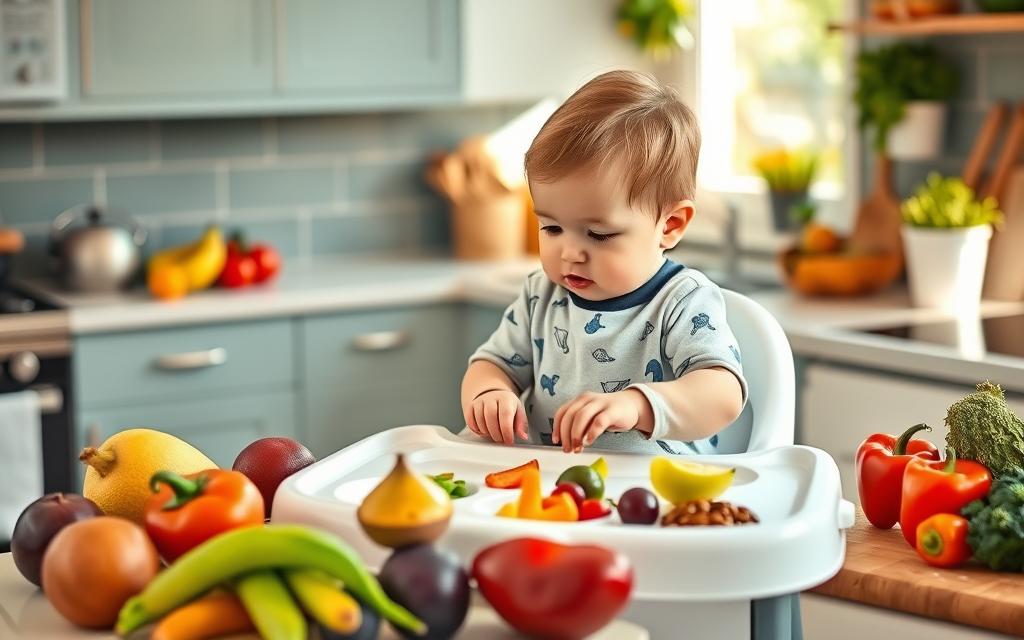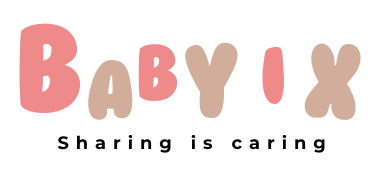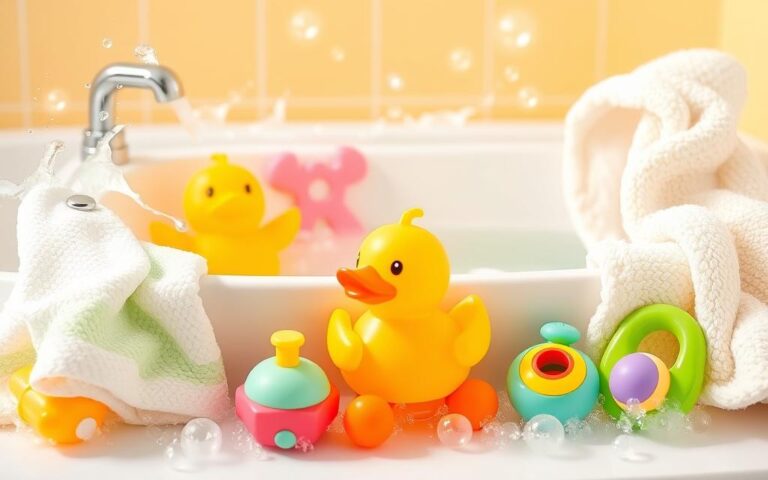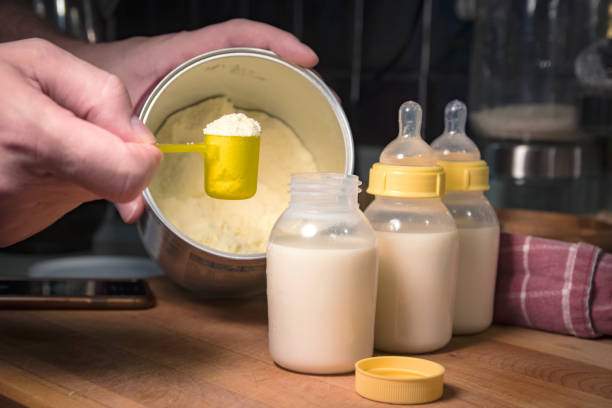Baby’s First Solids: Tips for a Smooth Transition

Introducing solid foods to your baby is a big step. Having a good plan can really help. A guide for parents can be very useful in this journey.
A smooth start to solid foods is key for your baby’s growth. It’s important to be ready for this.
A good guide for parents offers great tips on starting solids. It helps parents understand the importance of a good plan. This way, parents can make sure their baby’s transition is healthy and happy.
With the right help, parents can feel ready for this big step. Whether it’s introducing solid foods or following a guide, they can be confident.
Key Takeaways
- A smooth transition to solid foods is key for your baby’s growth.
- A good plan is essential for introducing solid foods to your baby.
- A starting solids guide for parents is very helpful.
- Knowing the importance of a good plan ensures a healthy start.
- With the right guidance, parents can feel confident and prepared.
- A detailed guide offers valuable tips and insights for introducing solid foods.
Signs Your Baby is Ready for Solid Foods
As a parent, knowing when your baby is ready for solid foods is key. This is a big step in their growth and development. Look for physical, age-related, and behavioral signs to know when to start.
Your baby should be able to sit up with support and have good head and neck control. Most babies are ready for solid foods around six months. They might show interest in food by watching you eat or trying to grab your spoon.
Physical Development Indicators
- Sitting up with support
- Good head and neck control
- Ability to move food from the front of the mouth to the back for swallowing
Age-Related Guidelines
Typically, babies are ready for solid foods around six months. But remember, every baby is different. Some might be ready earlier or later.
Behavioral Readiness Signs
Your baby might show interest in food or try to grab your spoon. These signs, along with physical and age-related indicators, will help you know when to start solid foods. This makes introducing baby food a smooth and enjoyable experience.
By recognizing these signs and following guidelines, you’ll introduce your baby to new flavors and textures. This sets them up for a lifetime of healthy eating habits.
| Age | Physical Development | Behavioral Signs |
|---|---|---|
| 6 months | Sitting up with support, good head and neck control | Showing interest in food, reaching for food |
Essential Equipment for Starting Solids
When it comes to feeding baby solids, the right equipment makes a big difference. You want mealtime to be fun for both you and your baby. Here are some feeding baby solids tips to help you pick the best gear for your baby’s solid food journey.
To start, you’ll need a few key items, including:
- Spoons: Find soft, flexible spoons that are gentle on your baby’s mouth and gums.
- Bowls: Choose sturdy, easy-to-clean bowls with a non-slip bottom to prevent sliding.
- Bibs: Pick bibs with a waterproof layer and a crumb-catcher pocket to keep things tidy.
With the right equipment, you can focus on feeding baby solids and watching your baby grow. Always put your baby’s safety and comfort first during meals. If you have concerns or questions, don’t hesitate to ask your pediatrician.
Remember, every baby is unique, and what works for one might not work for another. Be patient, stay flexible, and enjoy the journey of feeding baby solids with your little one.
Best First Foods for Your Baby’s Journey
Choosing the right first foods for your baby is key. Pureed fruits and veggies are great for starting. Rice cereal, sweet potatoes, and carrots are top picks.
These foods are full of nutrients and less likely to cause allergies. Start with small amounts and increase as your baby gets used to eating solids.
Safe Starter Foods
- Rice cereal
- Pureed sweet potatoes
- Pureed carrots
- Pureed green beans
Foods to Avoid
Stay away from nuts, seeds, and popcorn. They can be choking hazards. Also, avoid foods high in sugar and salt.
Portion Sizes and Consistency
Begin with small portions and increase as your baby eats more. Feed solids at the same times each day, like breakfast, lunch, and dinner.
| Age | Portion Size |
|---|---|
| 4-6 months | 1-2 teaspoons |
| 7-9 months | 2-3 tablespoons |
| 10-12 months | 3-4 tablespoons |
Introducing Solid Foods to Baby: Step-by-Step Guide
Starting your baby on solid foods can be a big step. It might seem scary, but with a clear guide, you can do it with ease. Start with a simple food like pureed sweet potatoes or peas to avoid allergies.
Begin by giving a small amount of solid food after a milk feed. This is when your baby is most ready. Start with a teaspoon and add more as your baby gets used to eating solids. The goal is to introduce new tastes and textures, not to replace milk.
As you move forward, you can try different foods like fruits, veggies, and proteins. Watch how your baby reacts and change the menu if needed. If you notice any signs of an allergy, talk to your pediatrician before adding more foods.
- Start with single-ingredient foods to minimize the risk of allergic reactions.
- Gradually increase the amount of solid food as your baby becomes accustomed to eating.
- Monitor your baby’s reactions and adjust the menu if necessary.
By following these steps and paying attention to your baby’s needs, you can make starting solids a good experience. Always check with your pediatrician if you have any questions about how to start solids with baby.
Traditional Purees vs Baby-Led Weaning
Introducing solid foods to your baby can be done in two main ways: traditional purees and baby-led weaning. Each method has its own advantages and disadvantages. Traditional purees are smooth, blended foods, while baby-led weaning lets your baby feed themselves.
Traditional purees are easier for young babies to digest. But, baby-led weaning boosts motor skills and independence. Baby-led weaning also lets babies try different tastes and textures, which is good for their growth.
Benefits of Each Approach
- Traditional purees: easier to digest, less messy
- Baby-led weaning: promotes motor skills, independence, and exploration of tastes and textures
The choice between traditional purees and baby-led weaning depends on your family’s lifestyle and what you prefer. Some parents start with purees and then move to baby-led weaning as their baby grows.

Choosing the Right Method for Your Family
Think about your baby’s needs and personality when choosing between traditional purees and baby-led weaning. If you’re not sure, talk to your pediatrician to find the best option for your baby.
Safety Precautions and Choking Prevention
When introducing solid foods to baby, safety is key to avoid choking and other dangers. Always watch your baby during meals. Make sure they sit up straight and don’t lie down while eating.
To lower choking risks, cut food into small, easy-to-swallow pieces. Here are some tips to remember:
- Start with soft, easy-to-chew foods like mashed bananas or avocados
- Cut solid foods into small cubes or thin strips
- Avoid giving your baby round or hard foods like grapes or nuts
Knowing about possible allergens is also important for safety. Introduce new foods one at a time. Watch for any signs of an allergic reaction, like a rash or trouble breathing. If you see these signs, get help right away.
By taking these safety steps, you can make sure your baby has a safe place to try new foods. This way, they can enjoy introducing solid foods to baby without worry.
| Food | Size | Texture |
|---|---|---|
| Banana | Small pieces | Mashed |
| Avocado | Thin strips | Mashed |
| Chicken | Small cubes | Cooked and tender |
Creating a Feeding Schedule
As a parent, setting up a feeding schedule is key when starting solids. It balances milk and solids for a smooth transition. When making a starting solids guide for parents, think about your baby’s age, weight, and health.
A feeding schedule mixes breast milk or formula with solid foods. For instance, a 6-month-old might start with one solid meal a day. An 8-month-old could have two to three solid meals. The goal is to add more solid meals and fewer milk feeds over time.
Sample Feeding Routines
- 8:00 am: Breast milk or formula
- 12:00 pm: Solid meal (e.g., pureed fruits or vegetables)
- 4:00 pm: Breast milk or formula
- 6:00 pm: Solid meal (e.g., pureed meats or whole grains)
Every baby is different, so adjust the feeding schedule as needed. Always talk to your pediatrician before changing your baby’s diet.
By sticking to a good feeding schedule and starting solids guide for parents, you can help your baby stay healthy and happy. Keep an eye out for more tips on introducing solids to your baby’s diet.
| Age | Solid Meals per Day | Milk Feeds per Day |
|---|---|---|
| 6 months | 1-2 | 4-5 |
| 8 months | 2-3 | 3-4 |
| 10 months | 3-4 | 2-3 |
Common Challenges and Solutions
Introducing solid foods to a baby can be tough for parents. One big issue is when the baby doesn’t want to eat certain foods or textures. It’s important to stay calm and patient. This is just part of learning.
It can be hard to tell if a baby is gagging or choking. Gagging is okay and helps prevent choking. But choking is serious and needs quick action. Look for signs like trouble breathing, blue skin, or losing consciousness.
Identifying Allergic Reactions
Allergic reactions can happen when trying new foods. Watch for signs like rashes, itching, swelling, or breathing problems. If you think your baby is having an allergic reaction, get help from a doctor right away.
Some common problems and how to solve them include:
- Food refusal: Try different foods and don’t push your baby to eat something they don’t like.
- Gagging: Be patient and let your baby get used to gagging on their own.
- Allergic reactions: Talk to a doctor about introducing new foods and managing allergies.
Knowing about these common issues can help parents feel more ready to introduce solid foods. Remember, every baby is unique. If you’re unsure, always ask a healthcare professional for advice.
Tracking Your Baby’s Progress
When introducing solid foods to baby, it’s key to watch their progress closely. This means tracking progress in how they take to new foods, any signs of allergy or intolerance, and their growth. A food diary is a great tool for this, helping you note how your baby reacts to different foods and spot any issues early.
A typical food diary might include the following information:
- Date and time of feeding
- Type and amount of food given
- Baby’s reaction to the food (e.g. acceptance, refusal, signs of allergy or intolerance)
- Any notable changes in baby’s behavior or physical condition
By tracking progress and watching how your baby reacts to introducing solid foods to baby, you can make sure they have a smooth start with solid foods. Always talk to your pediatrician if you have any worries or questions about your baby’s diet or growth.
With patience, attention to detail, and a commitment to tracking progress, you can help your baby do well as they start eating solid foods.
Conclusion: Supporting Your Baby’s Food Journey
As your little one starts exploring solid foods, it’s a journey filled with excitement and patience. The first steps might be tough, but with the right support, you can handle it. This is a time to enjoy together.
Every baby is different, so be ready to adjust. Listen to your baby and trust your instincts. Get advice from doctors and lean on your family and friends. This way, you’ll make memories and help your baby develop good eating habits.
The main thing is to have fun and celebrate every small victory. Enjoy the new tastes and textures with your baby. This special time will help shape their eating habits and create lasting memories.






